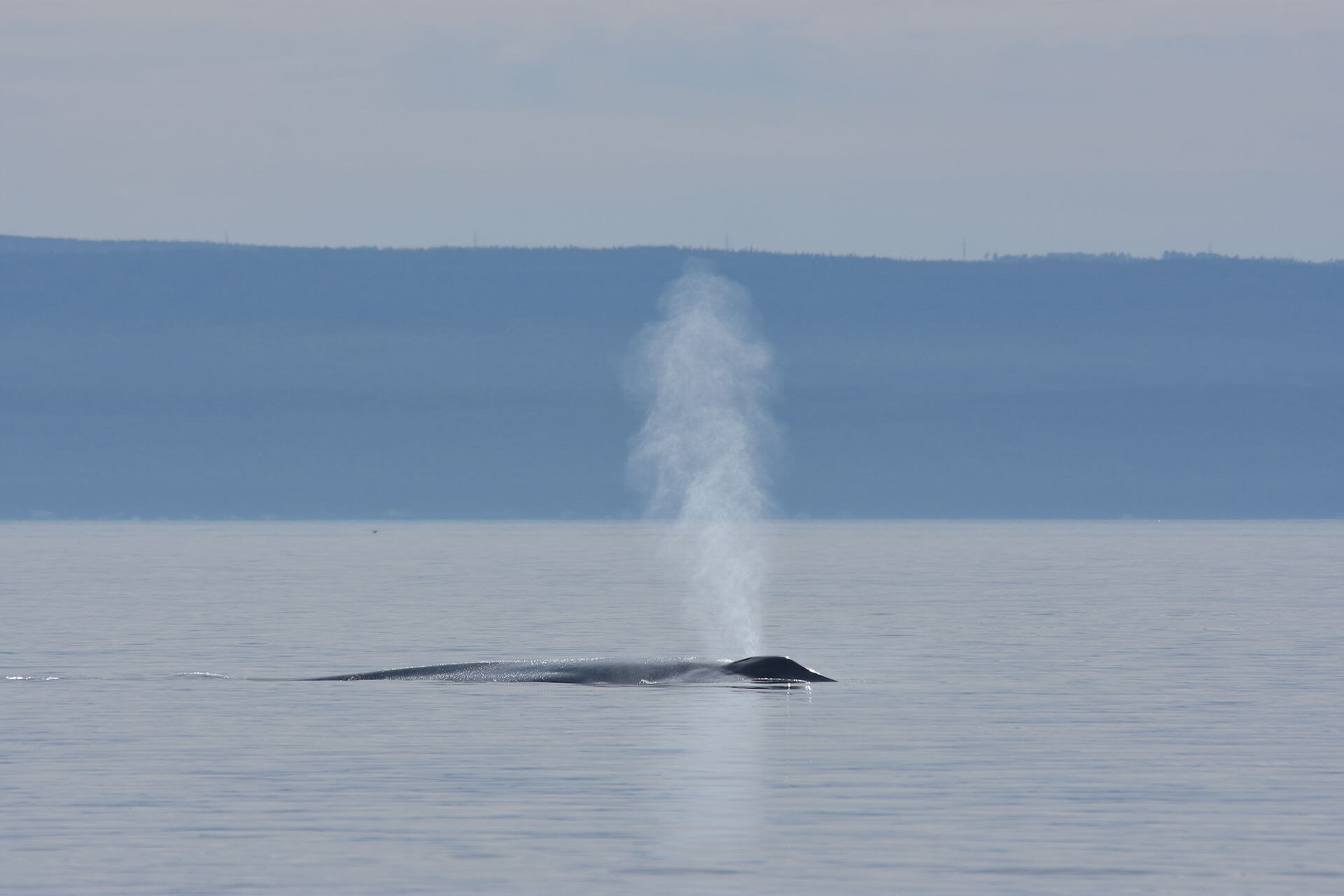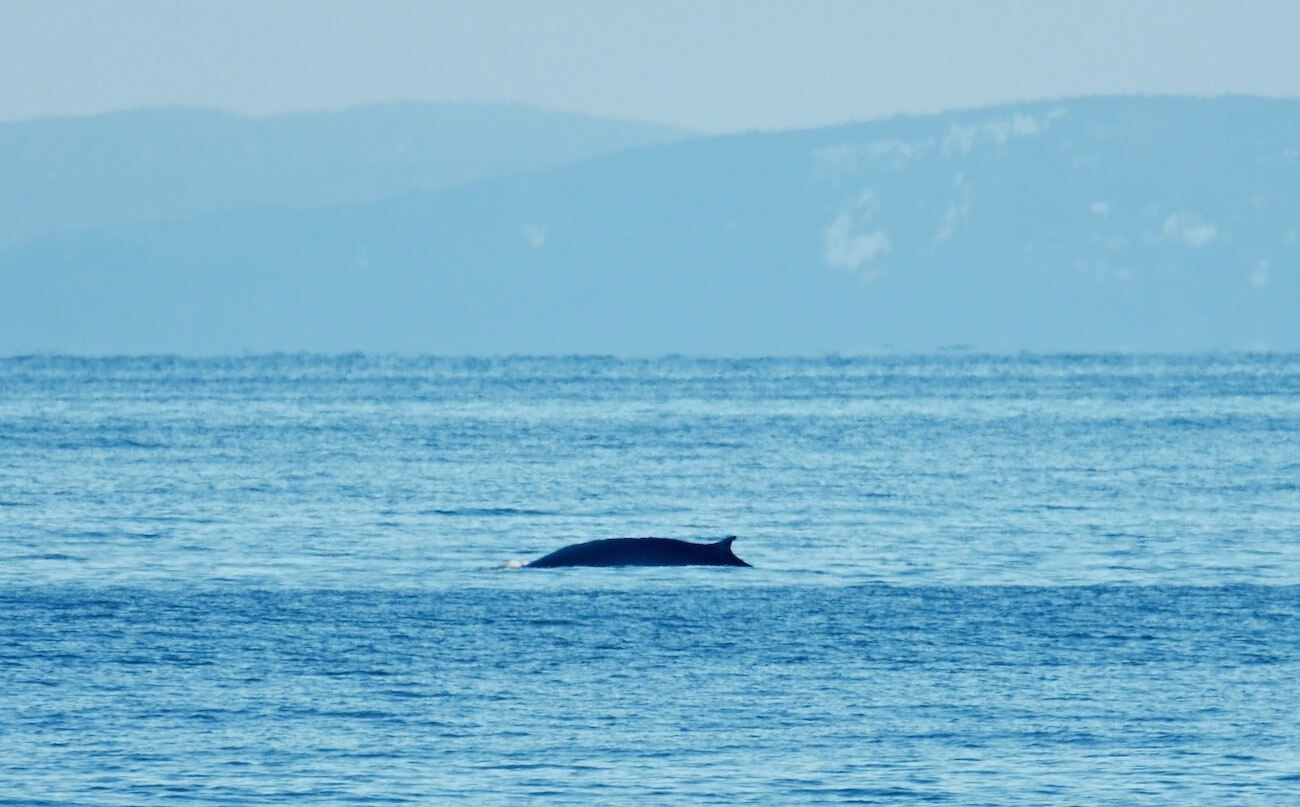What could possibly spark the interest of adults and children alike, drawing a crowd on the shores of Franquelin one recent morning? The towering breaths of a blue whale offshore!
“The whale was far, but still close enough that we could see its large spouts,” explains one local resident. No wonder we can spot them from so far away: These titans produce impressive blasts that can reach up to six metres high. Their breathing sequences generally consist of three or four exhalations. Their dives last between 10 and 15 minutes, and in some cases even up to 30 minutes. Three or four minke whales accompanied by a few harbour porpoises and white-sided dolphins were also observed swimming near Franquelin during the week.
In Gaspé Bay, two whales were spotted at Cap-aux-Os on two consecutive days. Though they were not identified, their large conspicuous breaths still gave them away! We should also not forget the handful of harbour seals faithfully resting on their favourite rock.
A photo for my friend!
One gorgeous weekday, two or three belugas were swimming near the ferries crossing the Saguenay Fjord. For sharp-eyed observers, they could be seen from either bank. A few days later, it was under the snowflakes that a seasoned observer spotted some of these white whales in Tadoussac Bay: “A group of two or three belugas and a solitary animal on Monday under the snow near Pointe-Rouge!” To her colleague from Québec City, always on the lookout for a good “photo op,” she explains that, unfortunately: “Visibility wasn’t great, so we didn’t take any pictures.”
Regulars and newcomers
The hundred or so dolphins that have been observed for several weeks in the Saguenay-St. Lawrence Marine Park don’t yet seem like they’re quite ready to leave the region. Many individuals were seen once again this week! Other recent visitors include the mysterious humpback whale that arrived late this fall and that was even supposedly spotted with a second humpback. A few minke whales, grey seals and harbour seals were also reported this week. However, it was the presence of a fin whale that amazed us the most! A photographer and wildlife naturalist describes his sighting: “Early this morning, I was very lucky to spot a fin whale heading northeast. It takes a dive… I wait. A blast erupts 8 minutes later, then another one almost simultaneously in the same area! The fin whale continues its course northeast.”
Anecdote from 1976
After reading one of our articles earlier this fall regarding the presence of killer whales in the Lower North Shore, a reader wanted to share a most interesting anecdote. “In the summer of 1976 […], sitting with some friends on the rocks of the Gros-Cacouna peninsula, before the deep-water port was built, all of a sudden we caught sight of a herd of around twenty killer whales very close to shore. What a surprise!” They had ventured up the St. Lawrence quite a way! We wonder if we’ll ever see this many killer whales in the area again, as the most recent sighting in the estuary dates back to 2003!
Thanks to all our collaborators!
Special thanks go out to all our observers who share their love for marine mammals with us! Your encounters with cetaceans and pinnipeds are always a pleasure to read and discover.
On the water or from shore, it is your eyes that give life to this column.
Raynald Asselin
Laetitia Desbordes
Élizabeth Melis
Diane Ostiguy
Renaud Pintiaux
Pascal Pitre
Alain Ross
Andréanne Sylvain
Marielle Vanasse
And all those we left out!
Additionally, we would like to acknowledge the following teams for also sharing their sightings:
Mingan Island Cetacean Study (MICS), Marine Mammal Observation Network (ROMM),
Quebec Marine Mammal Emergency Response Network: Status Report (QMMERN),
Group for Research and Education on Marine Mammals (GREMM)
Would you also like to share your observations?
Have you seen any marine mammals in the St. Lawrence? Whether it’s a spout offshore or just a couple of seals, drop us a line and send your photos to [email protected]!







